Easy Ways to Remember Animal Kingdom Phyla for Exams
The animal kingdom is a large and diverse group of living organisms that are multicellular and eukaryotic. Unlike plants, animals do not have cell walls or chlorophyll, which means they cannot make their own food through photosynthesis. Instead, they rely on various heterotrophic modes of nutrition.
Scientists classify the animal kingdom into different phyla based on characteristics such as body structure, presence or absence of a true body cavity, type of symmetry, and more. This animal kingdom classification helps us organise the vast diversity of animals into manageable groups.
Classification of the Animal Kingdom
The animal kingdom is generally divided into ten major phyla:
Porifera
Coelenterata (Cnidaria)
Platyhelminthes
Nematoda
Annelida
Arthropoda
Mollusca
Echinodermata
Hemichordata
Chordata
A quick mnemonic to remember these phyla is:
“Po Co Pla Ni An Ar Mo Ec He Cho”
Po – Porifera
Co – Coelenterata
Pla – Platyhelminthes
Ni – Nematoda
An – Annelida
Ar – Arthropoda
Mo – Mollusca
Ec – Echinodermata
He – Hemichordata
Cho – Chordata
Below is a detailed classification of animals within each phylum, including key features and examples.
Phylum Porifera
Key Features:
Commonly called sponges.
They have a porous body with numerous tiny openings or pores.
They are multicellular but do not have well-defined tissues or organs.
A canal system formed by these pores aids in the circulation of water and nutrients.
Mostly found in marine habitats, and they are non-motile.
Examples: Spongilla, Sycon
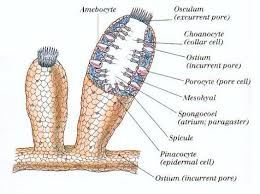
Did You Know?
Sponges can regenerate if broken into smaller pieces, as each piece can grow into a new sponge.
Phylum Coelenterata (Cnidaria)
Key Features:
Body contains a hollow cavity.
Tissues are arranged in two layers (diploblastic).
Can exist in colonies (like corals) or live solitarily (like sea anemones).
They have special stinging structures called nematocysts for defence and capturing prey.
Mostly aquatic, found in marine and sometimes freshwater habitats.
Examples: Hydra, Jellyfish
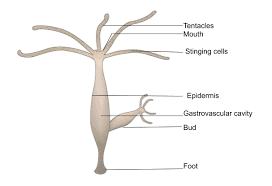
Fun Fact
Corals, though appearing like colourful plants, are actually colonies of tiny animals called polyps.
Phylum Platyhelminthes
Key Features:
Commonly known as flatworms.
They are dorsoventrally flattened (thin from top to bottom).
Tissues are triploblastic (three layers), but they lack a true coelom (body cavity).
Bilaterally symmetrical.
They can be free-living (Planaria) or parasitic (liver flukes).
Examples: Tapeworm, Planaria
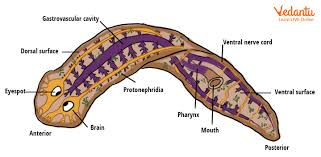
Interesting Note
Planaria can regenerate a complete worm from small body segments, making them popular in regeneration studies.
Phylum Nematoda
Key Features:
Also called roundworms.
Triploblastic and bilaterally symmetrical.
Possess a pseudocoelom (false body cavity).
Many nematodes are parasitic and can cause diseases in humans and other organisms (for example, Ascaris causes ascariasis).
Examples: Ascaris (roundworm), Wuchereria (filarial worm)
.png)
Health Tip
Washing fruits and vegetables thoroughly helps prevent nematode infections.
Phylum Annelida
Key Features:
Commonly known as segmented or ringed worms.
Body is segmented and shows bilateral symmetry.
Triploblastic with a true body cavity (coelom).
They can be found in marine environments, freshwater, or on land (moist soil).
Have well-developed organ systems.
Examples: Earthworm, Leech
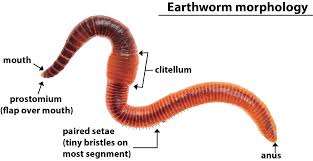
Useful Fact
Earthworms are often called “friends of farmers” because they help in aerating and fertilising the soil.
Phylum Arthropoda
Key Features:
This is the largest phylum in the animal kingdom.
Name means “jointed legs”.
Bilaterally symmetrical, triploblastic, with a segmented body.
Have an exoskeleton made of chitin.
They possess an open circulatory system (blood does not flow in closed vessels).
Examples: Spiders, Butterflies, Mosquitoes, Cockroaches
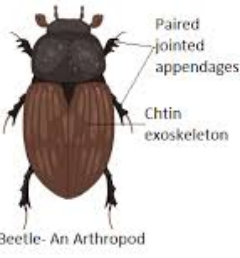
Fun Observation
Arthropods can be found in every possible habitat – from deep seas to high mountains.
Phylum Mollusca
Key Features:
Second-largest phylum in the animal kingdom.
Bilaterally symmetrical, triploblastic, and less segmented than annelids and arthropods.
Possess a well-developed organ system and generally have an open circulatory system.
Many have a muscular foot for movement and a mantle that secretes a shell.
Examples: Snails, Octopus, Clams
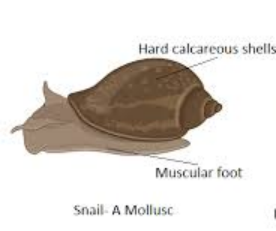
Extra Info
Octopuses are among the most intelligent invertebrates, capable of problem-solving.
Phylum Echinodermata
Key Features:
Means “spiny-skinned” animals (echino = spines, derma = skin).
They are exclusively marine.
Adult echinoderms have radial symmetry, but their larvae show bilateral symmetry.
Triploblastic and have a true coelom.
Have a water vascular system that helps in movement, feeding, and respiration.
Examples: Sea Urchins, Starfish, Brittle Stars
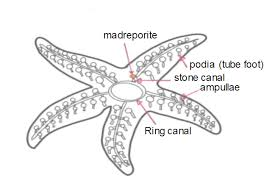
Cool Fact
Starfish can regenerate lost arms, which can sometimes lead to a completely new individual arm regrowing into a full starfish.
Phylum Hemichordata
Key Features:
Worm-like marine animals with a soft, fragile body.
The body is divided into a proboscis, collar, and trunk.
Organ-system level of organisation, with an open circulatory system.
Respiration occurs through gill slits.
Sexes are usually separate, and fertilisation is external.
Examples: Balanoglossus, Saccoglossus
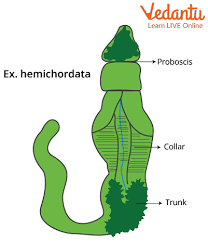
Note
Hemichordates are sometimes considered a link between invertebrates and chordates, due to certain similar features.
Phylum Chordata and Its Subphyla
Key Features of Chordates:
Bilaterally symmetrical, triploblastic.
Possess a notochord (in some stage of life) and a dorsal nerve cord.
Closed circulatory system.
Phylum Chordata is further divided into three subphyla:
Urochordata (Tunicates)
Notochord is present only in the larval stage.
Adults are mostly sessile (non-motile).
Cephalochordata (Lancelets)
Notochord is present throughout life.
The body is fish-like, and they live in marine habitats.
Vertebrata
Have a vertebral column (backbone) replacing the notochord in adults.
Further classified into classes such as Pisces (fishes), Amphibia, Reptilia, Aves (birds), and Mammalia (mammals).
Quick Quiz (With Answers)
1. Which phylum is known for spiny skin?
Answer: Echinodermata
2. Name the largest phylum in the animal kingdom.
Answer: Arthropoda
3. Which phylum includes roundworms?
Answer: Nematoda
4. Which phylum is characterised by a water vascular system?
Answer: Echinodermata
5. In which phylum do animals have a pseudocoelom?
Answer: Nematoda
Related Topics


FAQs on Animal Kingdom Classification: Complete Guide to Phyla & Subphyla
1. What is the primary basis for classifying animals in the Animal Kingdom?
The primary basis for animal classification involves several fundamental features of their body plan. These include:
- Levels of Organisation: Whether the animal has a cellular, tissue, organ, or organ-system level of organisation.
- Symmetry: The arrangement of body parts, which can be asymmetrical (e.g., sponges), radial (e.g., sea anemones), or bilateral (e.g., humans).
- Germ Layers: Whether the embryo is diploblastic (two layers: ectoderm and endoderm) or triploblastic (three layers, including a mesoderm).
- Coelom: The nature of the body cavity, classifying animals as acoelomates, pseudocoelomates, or coelomates.
- Segmentation: The presence of repeated body segments (metamerism).
- Notochord: The presence or absence of this flexible rod-like structure.
2. What are the major phyla of the Animal Kingdom as per the NCERT Class 11 syllabus for 2025-26?
According to the NCERT syllabus, the Animal Kingdom is broadly classified into the following 11 major phyla:
- Porifera (Sponges)
- Coelenterata (Cnidaria)
- Ctenophora (Comb Jellies)
- Platyhelminthes (Flatworms)
- Aschelminthes (Roundworms)
- Annelida (Segmented Worms)
- Arthropoda (Insects, Spiders, Crustaceans)
- Mollusca (Snails, Clams, Octopuses)
- Echinodermata (Starfish, Sea Urchins)
- Hemichordata
- Chordata (Vertebrates and others)
3. What is the difference between diploblastic and triploblastic organisation?
The key difference lies in the number of embryonic germ layers from which all body tissues develop.
- Diploblastic animals have two germ layers: an outer ectoderm and an inner endoderm. A non-cellular layer called mesoglea may be present between them. This organisation is found in simpler animals like those in phylum Cnidaria.
- Triploblastic animals have three germ layers: an outer ectoderm, a middle mesoderm, and an inner endoderm. The mesoderm gives rise to complex organs and systems, a feature of all higher phyla from Platyhelminthes to Chordata.
4. How does the body cavity (coelom) serve as a key classification criterion?
The coelom, or body cavity lined by mesoderm, is crucial because its presence, absence, or type determines the complexity of an animal's internal structure. It provides space for organ development and circulation. Based on the coelom, animals are classified as:
- Acoelomates: Animals without a body cavity (e.g., Platyhelminthes).
- Pseudocoelomates: Animals with a false coelom, where the body cavity is not fully lined by mesoderm (e.g., Aschelminthes).
- Coelomates: Animals with a true coelom, which is completely lined by mesoderm, allowing for complex organ systems (e.g., Annelida to Chordata).
5. Why are Porifera (sponges) considered the most primitive multicellular animals?
Sponges are considered the most primitive because they exhibit a cellular level of organisation. This means their bodies are a loose aggregation of cells that are not organised into true tissues or organs like in more complex animals. They also possess a unique water canal system for feeding, respiration, and excretion, a simple design that sets them apart at the base of the animal evolutionary tree.
6. What is the functional importance of segmentation (metamerism) in the animal kingdom?
Segmentation, or the division of the body into a series of similar parts, is functionally important for several reasons. It allows for:
- Specialisation of Body Regions: Different segments can evolve to perform specific functions, leading to more complex body plans.
- Efficient Locomotion: It enables more controlled and powerful movement, as seen in the burrowing of an earthworm (Annelida).
- Redundancy: If one segment is damaged, other segments can often continue to function, increasing the animal's chances of survival.
7. How are Hemichordates different from true Chordates?
The primary distinction that separates Hemichordates from true Chordates lies in the nature of their dorsal, hollow nerve cord and notochord. While Hemichordates were once considered a subphylum of Chordata due to features like pharyngeal gill slits, they are now a separate phylum. The key difference is that Hemichordates possess a stomochord, a hollow outgrowth from the gut, which is not considered homologous to the true notochord found in all Chordates.
8. Explain the importance of a notochord with examples of animals that possess it.
The notochord is a flexible, rod-like structure derived from the mesoderm, found in all members of the phylum Chordata at some stage of their life. Its importance is twofold: it provides the primary axial support for the body and serves as the developmental basis for the vertebral column (backbone) in vertebrates. Examples of animals with a notochord include lancelets (which retain it throughout life) and all vertebrates (like fish, birds, and mammals) during their embryonic stage.
9. What are the key differences between invertebrates and vertebrates?
The main difference is the presence or absence of a vertebral column or backbone.
- Vertebrates are animals that possess a bony or cartilaginous backbone that encloses the spinal cord. They are a subphylum within Phylum Chordata and include fish, amphibians, reptiles, birds, and mammals.
- Invertebrates are animals that lack a vertebral column. This is a vast and diverse group that includes all other animal phyla, such as Arthropoda, Mollusca, and Annelida, accounting for over 95% of all known animal species.
10. Why are animals heterotrophic and lack a rigid cell wall, unlike plants?
Animals evolved differently from plants to suit their active lifestyle. They are heterotrophic, meaning they must ingest other organisms for energy because their cells lack chlorophyll for photosynthesis. The absence of a rigid cell wall is a key adaptation for this lifestyle. It allows for cellular flexibility, which is essential for movement, the development of diverse tissues like muscle and nerve cells, and the ability to actively seek out and consume food.










